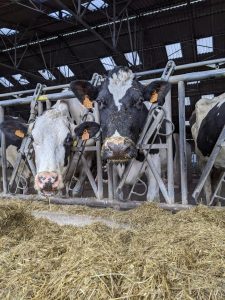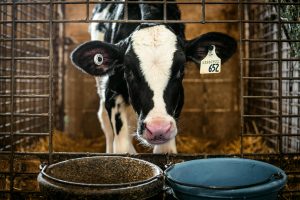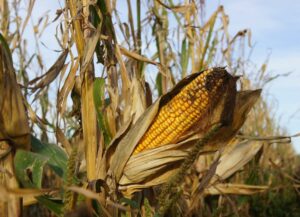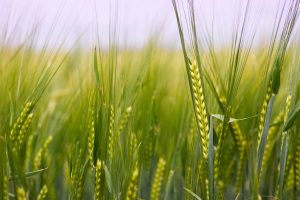Álvaro García
The word welfare originates from the Old English wel faran, meaning to fare well, to proceed in a good condition. Originally, it connoted health, happiness, and prosperity. Over time, the term expanded to include social and economic support systems, but its foundational meaning remains strikingly relevant when applied to animals: Are they faring well, or merely surviving?
In dairy farming, welfare encompasses more than the absence of pain, disease, or injury. It also includes the presence of comfort, security, emotional well-being, and the freedom to express natural behaviors. A cow lying calmly in a clean stall, chewing cud, with space to rise, move, and interact, is not just existing, she is faring well.
Yet this ideal coexists with a challenging reality. In most modern dairy systems, cows are typically culled between 5 and 6 years of age, often after completing just 2.5 to 2.7 lactations. Their biological potential lifespan, however, extends far beyond that since many cows can live 18 to 22 years, and some even longer under non-commercial farming conditions. This contrast raises a difficult but necessary question: Can we genuinely speak of animal welfare if lives are cut short, long before reaching their natural limits?
One way to reconcile this tension is to distinguish quality of life from length of life. While cows may receive excellent care while productive, including balanced diets, shelter, and medical attention, they are often culled not due to suffering, but because they become economically less viable, whether from declining fertility, chronic lameness, or mastitis.
Most welfare audits focus on how a cow lives, not how long she lives. But longevity is now emerging as a key indicator of both welfare and sustainability. Cows that live longer require fewer replacements, contribute less to greenhouse gas emissions, and signal success in managing health challenges over time. As the industry evolves, so should the questions we ask, shifting from “Is the cow comfortable today?” to “What are we doing to help her thrive for years to come?”
Welfare science through measurable indicators
Today, welfare is not assessed solely through observation or intuition, but through a suite of objective, science-based indicators. These metrics capture both the physical condition and psychological resilience of the animal allowing producers, veterinarians, and researchers to identify challenges early, tailor interventions, and benchmark progress. Among the most widely accepted and scientifically validated indicators are:
- Lameness and locomotion scoring
- Somatic cell count (SCC) and mastitis prevalence
- Lying time and rumination behavior
- Body condition and hygiene scoring
- Stress hormone levels and behavioral reactivity.
From freedom to well-being
The Five Freedoms were first introduced in the UK in the 1960s and later adopted and promoted by the Farm Animal Welfare Council. They remain one of the most influential and widely recognized frameworks for understanding animal welfare. Designed as a set of ethical principles, the Five Freedoms outline the basic conditions animals should be free from to avoid suffering. These include freedom from hunger and thirst, freedom from discomfort, freedom from pain, injury, or disease, freedom to express normal behavior, and freedom from fear and distress. While the framework has been instrumental in shaping legislation and public awareness around animal welfare, it primarily emphasizes the prevention of negative experiences. Unlike more modern models, it does not directly address the promotion of positive emotional states, such as pleasure or curiosity, but it laid the groundwork for the later, more complex welfare approaches like the Five Domains.
While the Five Freedoms laid the ethical foundation for modern welfare standards, newer models like the Five Domains offer a more comprehensive view, one that includes how animals feel as well as how they function. Developed by Professor David J. Mellor in the 1990s, the Five Domains Model was originally designed to assess animal welfare in scientific settings but has since evolved into a widely accepted framework for evaluating the overall quality of life in animals. The model expands on the traditional Five Freedoms by including not only physical needs such as nutrition, environment, health, and behavior, but also the animal’s mental state. This fifth domain captures the emotional outcomes of the other four and highlights how animals may experience comfort, pleasure, frustration, or fear. Models like the Five Domains now incorporate emotional and cognitive states including contentment, curiosity, and the animal’s ability to make choices and interact meaningfully with its environment. This approach encourages producers and veterinarians to move beyond simply preventing suffering, and to consider how to actively promote positive welfare experiences. These evolving standards have resulted in a shift in how we define a “welfare-positive” environment. It is no longer enough to avoid suffering; progressive producers are now encouraged to actively foster positive experiences. Certification schemes like the FARM Program in the U.S., the Red Tractor Assurance Scheme in the UK, and Global Animal Partnership (GAP) have incorporated these updated perspectives into their protocols, driving industry-wide improvements in how dairy cows are housed, managed, and monitored.
Monitoring comfort with technology
The integration of precision livestock farming technologies is reshaping how welfare is assessed on dairy farms. Tools such as 3D imaging technology placed over alleys can detect early-stage lameness through gait asymmetry before clinical signs become apparent. Wearable collars and ear tags now provide real-time insights into cow behavior like tracking rumination, feed intake, resting time, and movement patterns. These data streams are not collected in isolation; integration platforms now link behavioral metrics with reproduction, health, and milk production records. This combination of tools helps farmers stay ahead of problems, step in early when something is off, and make better decisions for each cow, all while keeping comfort a top priority.
Traditional welfare scoring systems such as locomotion scoring (Sprecher et al.), teat-end condition (Mein), and udder hygiene remain vital. However, their utility has expanded with the advent of digital support tools. For instance, rumination duration, lying bout frequency, and even a cow’s willingness to use an automated milking system are now recognized as behavioral proxies for stress or well-being. Somatic cell count remains a gold standard for detecting mastitis and inflammation, with thresholds typically set between 200,000 and 400,000 cells/mL, depending on regional guidelines. New platforms can now automatically analyze images or sensor data, turning previously subjective scoring into reproducible, real-time metrics that elevate the consistency and credibility of welfare monitoring.
Welfare, longevity, environment, and economics
The benefits of improved welfare extend well beyond the individual animal. Cows that are healthier, more comfortable, and better cared for live longer, produce more efficiently, and reduce the environmental burden per unit of milk. By extending productive life, farms decrease the need for replacements which is a major driver of emissions tied to heifer rearing. Life cycle assessments (LCA) have consistently shown that longer-living cows contribute to lower methane and nitrogen output, reduced feed requirements over time, and better land-use efficiency. Simply put, longevity is not only a welfare metric, but a sustainability strategy with clear environmental dividends.
In addition, investments in welfare pay off. Reducing SCC from 300,000 to 150,000 cells/mL in a 100-cow herd, for example, can yield 2 to 3 pounds of additional milk per cow per day, translating to $60–$90 daily at $0.20 per pound. Each case of mastitis can cost upwards of $400 when factoring in treatment, labor, lost production, and early culling. Lameness, another key welfare concern, often exceeds $300 per affected cow. Fortunately, proactive welfare strategies such as better ventilation, deep-bedded stalls, shaded resting areas, and early disease detection tools, often yield rapid returns through improved milk yield, reduced veterinary costs, and increased cow longevity. These are not just welfare decisions; they are smart business strategies.
The concept of cow welfare has steadily evolved from a focus on basic care and the prevention of suffering to a broader, evidence-based understanding that includes physical comfort, emotional stability, and longevity. As scientific frameworks and industry standards mature, it may be time to adopt language that better reflects the full scope of the animal’s lived experience.
Shifting from welfare to well-being provides a more comprehensive and compassionate framework, one that not only addresses the absence of pain but also affirms the presence of comfort, balance, and the ability to express natural behaviors. Embracing this broader concept might eventually lead us to reimagine not just how dairy cows live, but how long they can thrive, moving closer to their biological potential of 20 to 25 years. Well-being speaks to vitality, adaptability, and a life that is meaningful within the structure of a production system. It is not just a matter of productivity or freedom from harm, but of ensuring that cows are content, resilient, and able to interact with their environment in enriching ways.
© 2025 Dellait Knowledge Center. All Rights Reserved.









